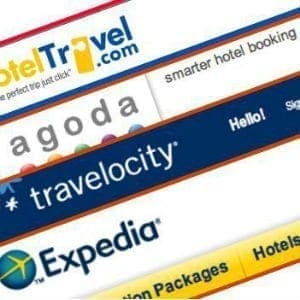 As I explained in my previous article, staff training has many benefits, but evaluating the Return on Investment (ROI) from conducting training is not the easiest job.
As I explained in my previous article, staff training has many benefits, but evaluating the Return on Investment (ROI) from conducting training is not the easiest job.
Because of the difficulty involved, most small businesses fail to evaluate training thoroughly and rarely consider their ROI in monetary terms. Instead, the emphasis is more subjective, placing value on employee satisfaction levels. However, there are relatively simple ways to calculate the ROI of your training programmes, including the eight-step approach initially introduced by 1 HRFocus (2005).
Eight steps for calculating your ROI:
- Identify a programme for analysis – remember, not all programmes need to have ROI i.e. some are just necessary costs.
- Determine the programme’s primary goals, e.g. increasing revenue, reducing errors, improving customer service, etc.
- Define the metrics – it has to be something that can be measured, so that the goal becomes clear.
- Convert metrics to monetary values – in the hospitality business, it could be measured by the average spend per customer or the amount of compensation/refunds given as a result of complaints.
- Project return or savings – this can be done though analysis of existing reports or historical evidence. For example you could ask ‘how much will the average spend increase if all service staff are trained to up-sell?’, ‘how much will our supplier bills decrease by reducing food waste if all staff are adequately trained?’ or ‘how much of our complaint-related expense can we reduce if all staff are adequately trained?’
- Determine training costs, including the costs to develop and run training programmes (incl. materials, facilities, salaries, etc.), pre- and post-training work, salaries of everyone involved in the training programme, cost for lost opportunity, etc.
- Calculate project ROI (use the monetary value from step 4).
- Identify intangible benefits – these might be enhancing the business’ reputation for good customer service, improved staff morale (which often results in better retention), manager’s time saved from firefighting with errors and problems.
Example:
A restaurant has 50 seats which turn around 1.5 times for lunch service. It opens 6 days a week and closes on Christmas Day and New Year’s Day (310 days a year). The manager’s salary is £25,000 a year (which roughly accounts for £13.00/hour) and staff are paid £7.20 an hour.
The manager decided to increase the average customer spend by £0.50 through training staff with up-selling skills. As he wants to make sure the training session is delivered efficiently, the manager took about 5 hours to prepare for it each time.
The manager delivered to staff a 30-minute training session five times a month before lunch service. He also provided verbal feedback to staff, both individually and in a group during the briefing, which roughly takes another 2 hours of his time each month. Each month 30 staff in total received the training.
The cost of labour for delivering training is:
Manager’s time: (5 hours for preparation + 2.5 hours a week for delivery + 2 hours for evaluation and feedback) x £13.50 = £123.50
Staff time: 30 staff to attend the session x 0.5 hours x £7.2 = £108
Therefore, annual cost of training is:
(£123.50 + £108.00) x 12 months = £2778.00
Increase of annual revenue as a result of this training programme is:
£0.50 increase in average spend x 50 seats x 1.5 turnaround x 310 days a year = £11,625
ROI can be calculated as:d
ROI = Change in Cost of Activity / Total Cost of Training x 100%
= £11,625 / £2,778 x 100%
= 418.5%
Although this calculation only takes into account the labour costs of in-house training, an ROI of over 400% may sound too good to be true. However, one example of a bank sending employees on an Investment of Business Banking Training course shows that the return on investment (mainly achieved by the number of new customers acquired) turned out that it would bring a 471% ROI. This example also shows that just a small increase in average spend would have a positive impact on annual revenue.
Generally, when measuring ROI in training it is easier to see a quick return on “hard” skills-sales and software training for example – than “softer” skills, such as leadership training, where any noticeable change can take months or years to see. In order to make sure the return is achieved, it is advisable that a measure is taken in quantitative manners.
Quarterly job reviews, focus groups and 360 degree feedback can help measure the impact of soft skills training.
1 Reference: HRFocus (2005), “How one trainer developed an eight-step program for ROI” HR Focus, March 2005, p.10.
About the author
 Yukari Iguchi is the Academic Lead, Hospitality and Leisure at the University of Derby Online Learning (UDOL). Yukari has worked in various sectors within the hospitality industry, including hotels, restaurants, bars and theme parks in Japan, Switzerland and the UK.
Yukari Iguchi is the Academic Lead, Hospitality and Leisure at the University of Derby Online Learning (UDOL). Yukari has worked in various sectors within the hospitality industry, including hotels, restaurants, bars and theme parks in Japan, Switzerland and the UK.
Since 2012 Yukari joined UDOL to share her knowledge of the hospitality sector with others. During her academic career Yukari also performed a range of roles including Programme Leader for undergraduate hospitality programmes, International Student Coordinator, International Collaborative Project Manager, and Online and Distance Learning Coordinator.
For more information about UDOL, go to: www.derby.ac.uk/online/home-page



















